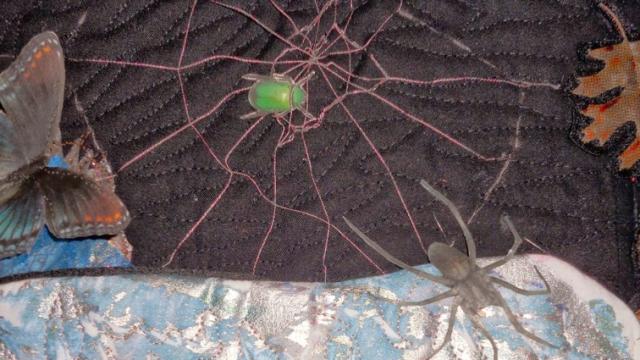Spider silk is nature’s Kevlar. It’s stronger than steel, it’s waterproof, and you can stretch it as much as 30 to 40 per cent before it snaps. Now biophysicists at Johns Hopkins University think they know the secret to spider silk’s remarkable elasticity: protein threads that serve as stretchy “superstrings”. The researchers describe their work in a recent paper in the journal Nano Letters.
Scientists have been studying the structure of spider silk for years, in hopes of taking a page from nature’s playbook to make artificial spider silk tailored to specific applications: everything from stronger ropes and nets to better bullet-proof vests and hollow optical fibres for nanoscale circuits. (It may even have promising antimicrobial and blood-clotting capabilities as well.)
Spiders spin their silk by secreting a fluid protein similar to keratin, a protein found in hair and horns, that hardens as it oozes. Those proteins are made up of seven amino acids: mostly alanine and glycine, with smaller amounts of glutamine, leucine, arginine, tyrosine and serine for good measure.
The proteins in living cells can act as force sensors, and the JHU team was making improvements to a special tool capable of measuring those forces when they stumbled on the “superstring” protein threads. Back in 2010, lead author Taekjip Ha (then at University of Illinois at Urbana-Champaign) and colleagues at the University of Virginia extracted a repeating amino acid sequence from a spider silk protein called flagelliform. Then they injected it into a human protein called vinculin, a key mechanism for communication within the cell.
The vinculin was tagged with two fluorescent proteins, one that naturally glowed blue and another that naturally glowed yellow. The first glowed yellow when the two fluorescent proteins were in sufficiently close proximity to each other — a phenomenon known as fluorescence resonance energy transfer (FRET). As the scientists stretched the vinculin, however, it reverted back to its blue hue as the distance between the two increased. This let them study the forces acting on the vinculin in living cells in real time.

The latest work published in Nano Letters builds upon that earlier research. Specifically, the scientists wanted to figure out how to translate the shifts in hue captured by the FRET imaging into actual measurements of the dynamical forces at play in the cell.
The key: an optical technique Ha dubbed “chopsticks made of light”. He and his colleagues attached one end of a vinculin protein injected with the flagelliforn amino acid sequence to a glass plate. The other end was attached to a DNA tether with a small plastic bead. To “pull” on the bead, they focused light on a small spot near it, giving rise to an attractive force. And they were able to link the fluorescent glow with dynamic forces acting on the proteins.
Hu et al were surprised to find that their spider silk proteins could stretch as much as five times their initial length. “All other known springs, biological and nonbiological, lengthen in a way that is directly proportional to the force applied to them only until they have been stretched to about 120 per cent of their original length,” Ha said in a statement. “At that point, you have to apply more and more force to stretch them the same distance as before. But the piece of the spider silk protein we focused on continues to stretch in direct proportion to the force applied until it reaches its maximal stretch of 500 per cent.”
The ability to measure these mechanical forces will give scientists a useful tool for better understanding how living cells change how they behave and function in response, such as what happens when cancer cells metastasise.
[Via Nanowerk News]
Top image courtesy of Judy Ferguson.
